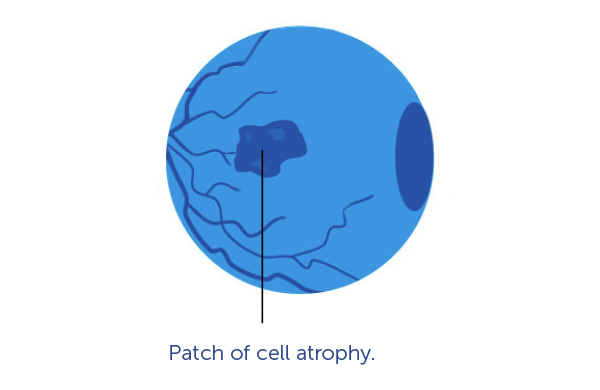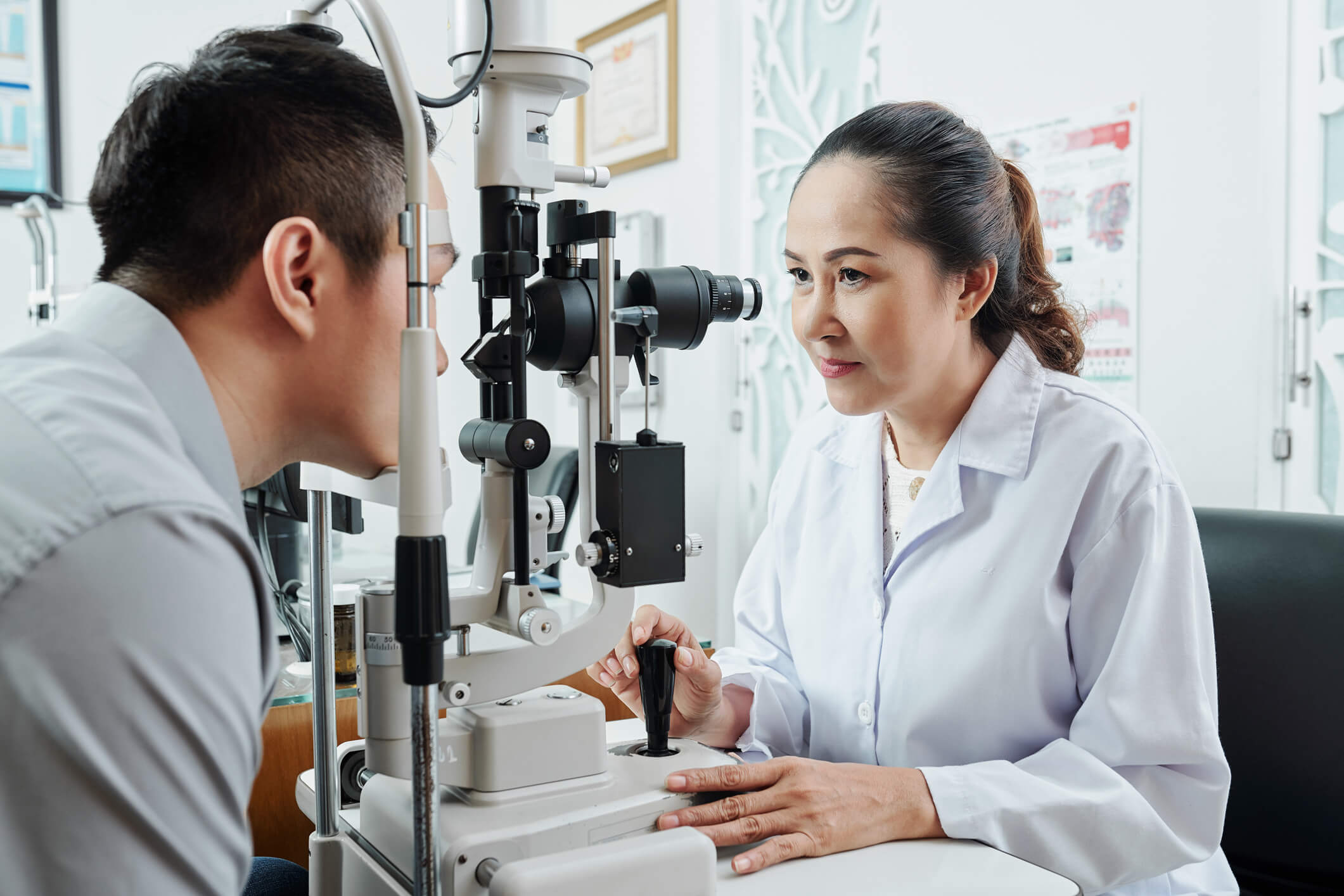Understanding Geographic Atrophy
Written By: BrightFocus Editorial Staff



Written By: BrightFocus Editorial Staff

Some people with age-related macular degeneration (AMD) will develop geographic atrophy, an advanced and severe form of dry AMD that can lead to permanent vision loss.
The disease harms the macula, the central part of the eye responsible for detailed vision. As geographic atrophy progresses, damaged areas called lesions grow, which may lead to a permanent hazy spot in the center of vision. Other common symptoms include missing or distorted spots in central vision, straight lines that look crooked, and trouble seeing in low or dim light. A dilated eye exam is the first step to diagnosing geographic atrophy.
Beyond affecting vision, geographic atrophy impacts quality of life by potentially disrupting the ability to read, drive, and recognize faces. This can result in challenges related to self confidence, independence, mental health, and overall well-being.

Click on the arrows or swipe to see how geographic atrophy affects vision.
If you’ve been diagnosed with dry age-related macular degeneration or geographic atrophy, it is important to monitor your vision for any changes and prioritize annual, comprehensive eye exams. Below are some questions to ask your eye doctor at your next appointment.
TIP: After your eye exam and tests, such as retinal images (photographs), your doctor may share the results and any recommendations. This is an optimal time to ask questions. You can also ask your doctor for a copy of your retinal images to take with you.

What can I do to reduce my risk? If you have been diagnosed with dry agerelated macular degeneration, certain risk factors increase your chance of developing geographic atrophy, including age (60 or older), a family history of the disease, smoking, obesity, race/ethnicity (white people are more likely to develop it than African Americans or Hispanics), light-colored eyes, excessive sun exposure, a high-fat and low-vegetable diet, and inactivity. You can reduce your risk by maintaining a healthy weight and limiting exposure to the sun, including wearing sunglasses.
AREDS2 vitamins could help slow the progression of intermediate age-related macular degeneration to advanced stages. For people with any form of the disease, it is beneficial to eat a diet rich in vegetables, supplemented with fruits and fish.
Your doctor will ask you to check your vision at home to help detect progression to advanced age-related macular degeneration. You can do this by covering one eye at a time and looking at reading material or an Amsler grid every few days. If you notice a change, such as blurry, wavy, or missing lines or letters, call your eye doctor immediately.
An eye doctor may be able to detect early signs of macular degeneration and geographic atrophy before symptoms appear. It is especially important to have regular eye exams to detect these signs as soon as possible.
The first two treatments for geographic atrophy, Syfovre and Izervay, were approved by the U.S. Food and Drug Administration in 2023. Both treatments slow the progression of the disease by targeting inflammation in the complement pathway system in the eye. Ask your doctor about what treatments are right for you.
Rapid advances in research are occurring, with several drugs in clinical trials for advanced age-related macular degeneration. If you are eligible, participating in clinical trials could not only help your short- or long-term vision but also facilitate new treatments for others in the future. For more information about geographic atrophy and to request free educational materials, please visit brightfocus.org/GA or call 1-855-345-6637.
This brochure is supported in part by a sponsorship from Apellis Pharmaceuticals.
BrightFocus Foundation is a premier global nonprofit funder of research to defeat Alzheimer’s, macular degeneration, and glaucoma. Through its flagship research programs — Alzheimer’s Disease Research, Macular Degeneration Research, and National Glaucoma Research— the Foundation has awarded nearly $300 million in groundbreaking research funding over the past 51 years and shares the latest research findings, expert information, and resources to empower the millions impacted by these devastating diseases. Learn more at brightfocus.org.
Disclaimer: The information provided here is a public service of BrightFocus Foundation and is not intended to constitute medical advice. Please consult your physician for personalized medical, dietary, and/or exercise advice. Any medications or supplements should only be taken under medical supervision. BrightFocus Foundation does not endorse any medical products or therapies.
